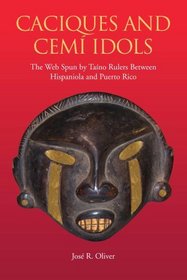Search -
Caciques and Cemi Idols: The Web Spun by Taino Rulers Between Hispaniola and Puerto Rico (Caribbean Archaeology and Ethnohistory)
Caciques and Cemi Idols The Web Spun by Taino Rulers Between Hispaniola and Puerto Rico - Caribbean Archaeology and Ethnohistory
Author:
Cemís are both portable artifacts and embodiments of persons or spirit, which the Taínos and other natives of the Greater Antilles (ca. AD 1000-1550) regarded as numinous beings with supernatural or magic powers. This volume takes a close look at the relationship between humans and other (non-human) beings that are imbued with cemí power, spe... more »
Author:
Cemís are both portable artifacts and embodiments of persons or spirit, which the Taínos and other natives of the Greater Antilles (ca. AD 1000-1550) regarded as numinous beings with supernatural or magic powers. This volume takes a close look at the relationship between humans and other (non-human) beings that are imbued with cemí power, spe... more »
ISBN-13: 9780817316365
ISBN-10: 0817316361
Publication Date: 4/28/2009
Pages: 432
Edition: 1
Rating: ?
ISBN-10: 0817316361
Publication Date: 4/28/2009
Pages: 432
Edition: 1
Rating: ?
0 stars, based on 0 rating
Publisher: University Alabama Press
Book Type: Hardcover
Other Versions: Paperback
Members Wishing: 1
Reviews: Amazon | Write a Review
Book Type: Hardcover
Other Versions: Paperback
Members Wishing: 1
Reviews: Amazon | Write a Review
Genres:




